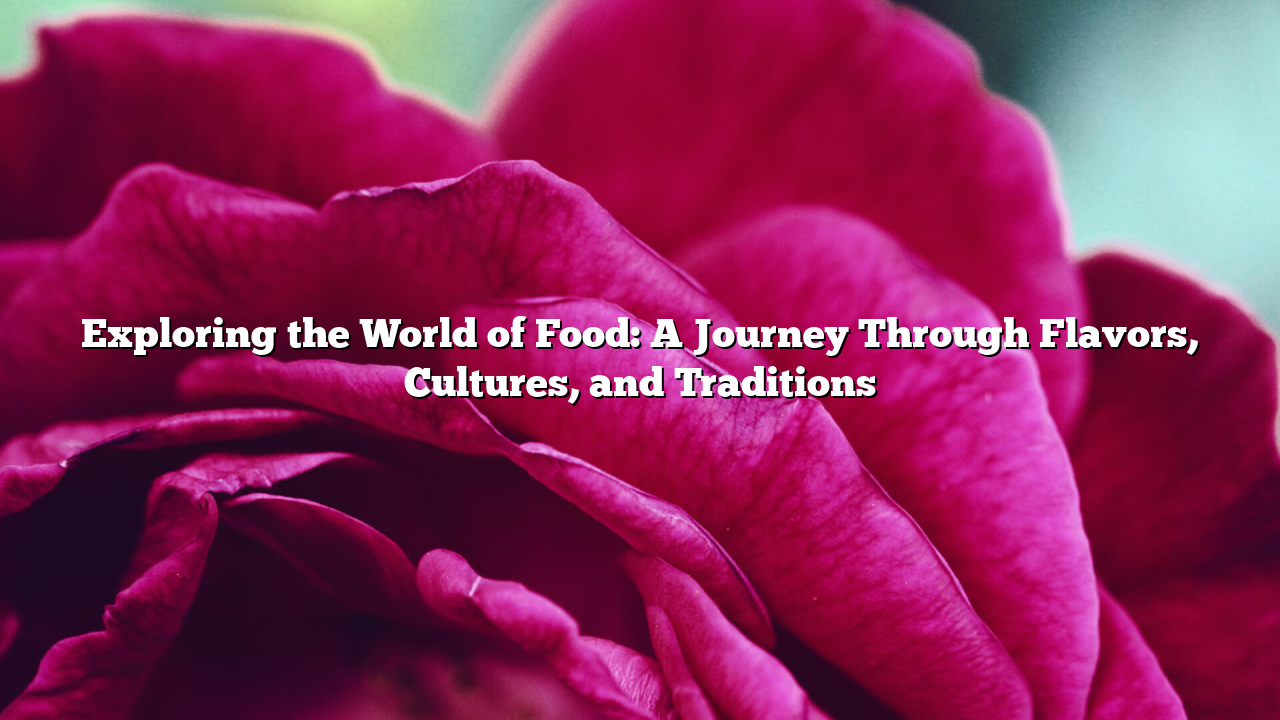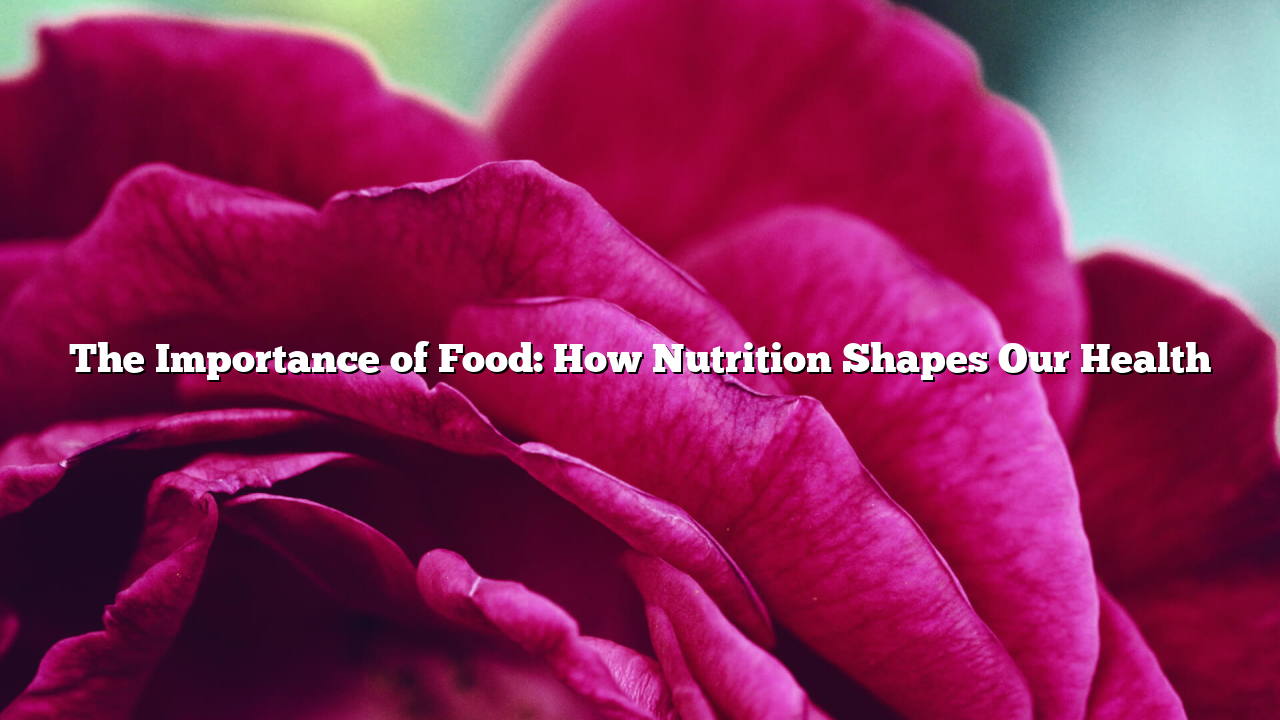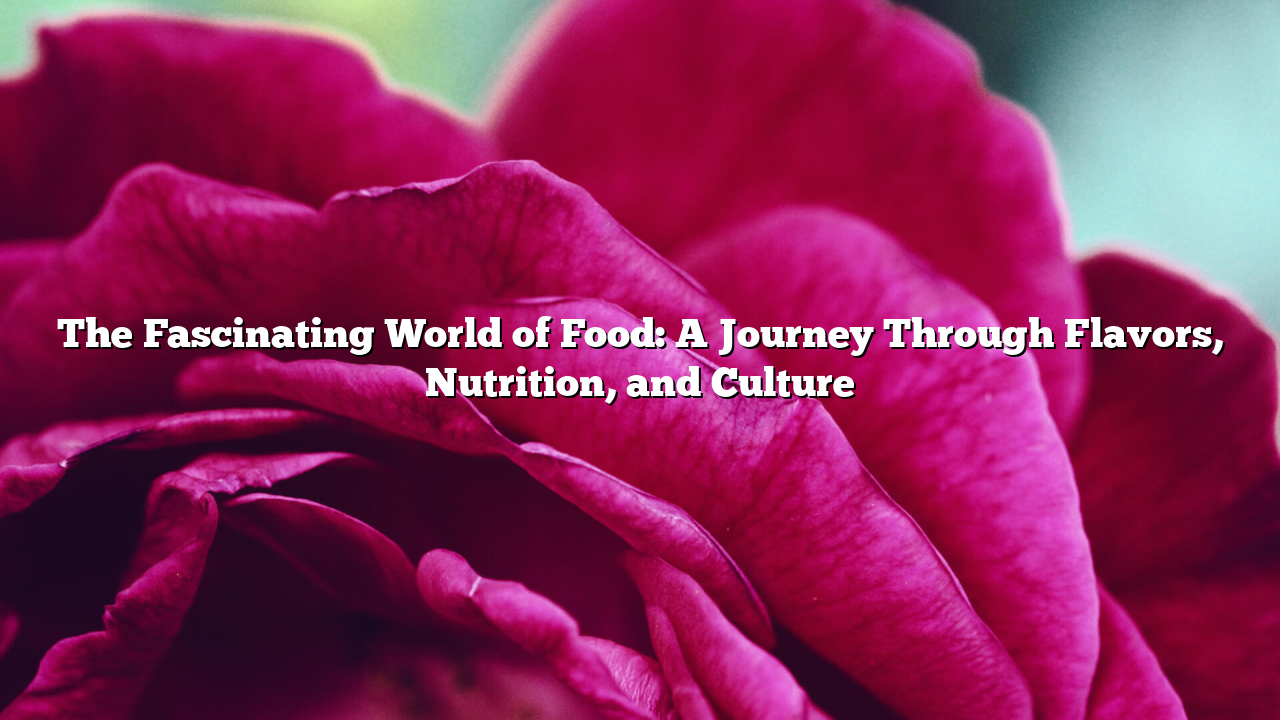Food is much more than mere sustenance; it’s an essential part of our lives that connects us
to our history, culture, and the people we share our lives with. It’s a universal language, one
that transcends boundaries and unites people from all corners of the world. Whether it’s a
simple home-cooked meal or a gourmet dish at a Michelin-starred restaurant, food has the
power to evoke memories, stir emotions, and provide comfort.
In this article, we will take a deep dive into the fascinating world of food, exploring its cultural
significance, the science behind flavors, and the impact food has on our health and the
environment.
The Cultural Significance of Food
Food plays a central role in the identity of every culture. From the spices used in Indian
cuisine to the simplicity of Italian pasta, each dish tells a story of geography, history, and
tradition. For instance, the use of rice in Asian dishes is deeply tied to the agricultural history
of the region, where rice fields dominate the landscape. Similarly, the Mediterranean diet,
with its emphasis on olive oil, vegetables, and fresh fish, is not only a testament to the
region’s abundant natural resources but also a reflection of the lifestyle and social structures
that have developed over centuries.
In many cultures, food is also a symbol of hospitality. Think of the Middle Eastern tradition of
offering guests a cup of tea or the Italian custom of serving a bountiful meal to friends and
family. Food brings people together, fosters connections, and creates a sense of belonging.
Celebrations and rituals around food are also prevalent in most societies. From birthdays
and weddings to religious holidays and festivals, food often takes center stage in these
moments of joy and communal gathering.
bayar 4d of Flavor
While cultural traditions play a significant role in shaping what we eat, there’s also a science
behind the flavors we experience. Flavor is the result of a complex interaction between taste,
smell, texture, and even temperature. The five basic tastes – sweet, sour, salty, bitter, and
umami – form the foundation of flavor. However, it’s the way these tastes combine with
aroma and mouthfeel that creates the full spectrum of flavors we enjoy.
Umami, the savory taste found in foods like mushrooms, soy sauce, and aged cheeses, was
only recognized as a basic taste in the 20th century. It plays a crucial role in enhancing the
overall flavor profile of a dish. The balance of these basic tastes is key to creating
harmonious, memorable meals. For example, a well-seasoned dish may balance sweet and
salty notes, while a spicy food might combine bitterness with a touch of sourness to create
depth.
The temperature of food also affects its flavor. Hot foods tend to release more volatile
compounds, intensifying aromas and enhancing flavor, while cold foods, like ice cream, may
suppress certain taste sensations. Texture, too, plays a crucial role in how we perceive food.
The crunchiness of a fresh vegetable or the smoothness of a well-made sauce can make a
significant difference in how a dish is enjoyed.
The Connection Between Food and Health
Food is not just about taste and tradition; it’s also a fundamental part of maintaining our
health. What we eat can have a profound impact on our physical and mental well-being. A
balanced diet, rich in fruits, vegetables, whole grains, and lean proteins, provides the
essential nutrients our bodies need to function optimally. On the other hand, a diet high in
processed foods, sugar, and unhealthy fats can lead to a variety of health problems,
including obesity, heart disease, and diabetes.
The gut plays a crucial role in overall health, with research showing that the foods we eat
can influence the composition of our gut microbiota – the trillions of bacteria living in our
intestines. A healthy gut microbiome is essential for digestion, immune function, and even
mental health. Therefore, eating a diverse, nutrient-rich diet is key to maintaining a healthy
gut and preventing chronic diseases.
In addition to physical health, food also affects our mental and emotional well-being. The link
between diet and mood is becoming more apparent, with studies showing that certain foods,
such as those rich in omega-3 fatty acids, can improve cognitive function and reduce
symptoms of depression and anxiety. Eating well can lead to improved energy levels, better
sleep, and a more positive outlook on life.
Sustainability and the Environment
As we become more aware of the environmental impact of our choices, sustainable food
practices are gaining importance. The food industry, particularly meat production, has been
identified as a significant contributor to greenhouse gas emissions, deforestation, and water
depletion. The rise in popularity of plant-based diets, locally-sourced ingredients, and
sustainable farming practices reflects a growing commitment to reducing our environmental
footprint.
Eating seasonally and supporting local farmers are two effective ways to make more
sustainable food choices. Seasonal produce tends to have a lower carbon footprint because
it doesn’t require the energy-intensive transportation methods needed for out-of-season
foods. Additionally, supporting local agriculture helps reduce food miles, benefiting both the
environment and the local economy.
Food waste is another pressing issue. According to the Food and Agriculture Organization of
the United Nations, roughly one-third of all food produced globally is wasted. This waste not
only contributes to greenhouse gas emissions but also represents a missed opportunity to
feed the hungry. By being more mindful of portion sizes, preserving leftovers, and
composting food scraps, we can all play a role in reducing food waste and its environmental
impact.
The Future of Food
As the global population continues to grow, finding sustainable ways to feed the world is one
of the biggest challenges facing humanity. The future of food may involve innovations in
lab-grown meat, plant-based alternatives, and vertical farming techniques that can produce
food in urban environments with minimal space. Advances in food technology, such as the
development of nutrient-dense, space-efficient crops, may hold the key to addressing food
insecurity while protecting the planet.
The evolution of food will also be influenced by consumer preferences and the growing
demand for healthier, ethically produced options. As people become more conscious of
where their food comes from and how it’s made, there will likely be an increasing emphasis
on transparency, traceability, and sustainability in food production.
Conclusion
Food is a powerful force in our lives. It nourishes our bodies, connects us to our cultures,
and has the ability to create lasting memories. As we navigate the complexities of modern
life, it’s essential that we recognize the profound impact food has on our health, the
environment, and our communities. By embracing diverse flavors, sustainable practices, and
mindful eating, we can enjoy a future where food continues to be a source of joy, connection,
and well-being for generations to come.
Exploring the World of Food: A Journey Through Flavors, Cultures, and Traditions











Leave a Reply